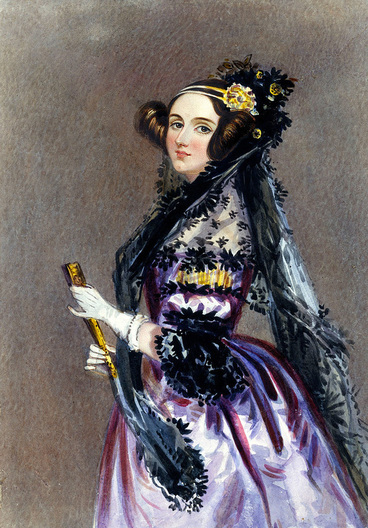What we do know, from letters and publications, is that she had a working friendship with Charles Babbage, the inventor of the never-built Analytical Engine. The Analytical Engine, had it been built, would have been the world's first computer, but rather than transistors or vacuum tubes, its central workings were cogs and punch cards. It was, or would have been, fully mechanical, and driven by steam power.
Ada Lovelace (or Ada Byron as she is sometimes known) was fascinated by the Analytical Engine, and recognized in it an enormous potential, for everything from creating mathematical tables to playing music. She translated an explanation of the Engine, and added her own rather copious "Notes" in order to explain how it might function, and algorithms that might be used in it. It is this, more than anything, that earned her her title as "the first computer programmer." But let's be honest. Ada Lovelace is no more a computer programmer than Charles Babbage is a computer engineer. They were, both of them, gifted mathematicians and talented dreamers, foreseeing in steel and brass a world that we have created in silicon, but never having a chance to create it. That is, in fact, why I wrote The Steel Lady - to bring to life a machine that only ever existed on paper and in prototypes, and to watch its existence play out in the lives of the people around it. So why should we care about Ada Lovelace? Because as a woman in the 1830s, she was a mathematician, and profoundly understood how a computer would work, without ever seeing it. Programmer or not, that would seem to deserve our admiration.
0 Comments
Leave a Reply. |
Author
Jane Perrella. Teacher, writer. Expert knitter. Enthusiast of medieval swordplay, tea, Shakespeare, and Batman. Archives
June 2019
Categories |

 RSS Feed
RSS Feed
